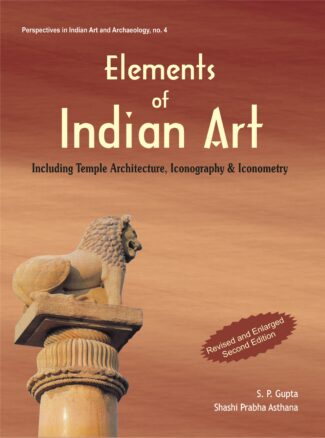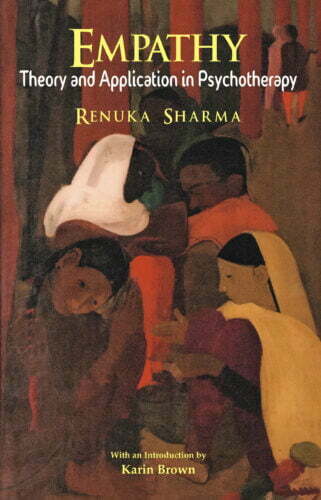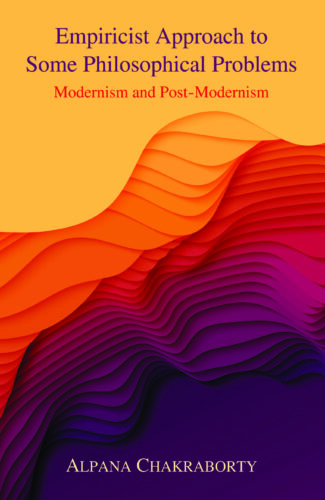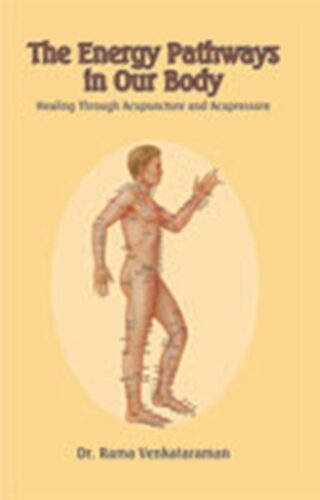Showing 241–250 of 1173 results

The work studies basic principles of ancient Indian art and architecture. It deals with Hindu thinking and practice of art including the Hindu view of Godhead, iconography and iconometry and symbols and symbolism in Hindu art. It surveys Indian art and temple architecture from the ancient times and makes comparative studies of religious art in India.
The book is a study of the fundamental principles of ancient Indian art and architecture, dealing with essentials of Hindu thinking and practice of art like the Hindu view of Godhead, iconography and iconometry, and symbols and symbolism in Hindu art. Referring to major classical Indian literary works shedding light on art and architecture, it undertakes a survey of Indian art and temple architecture from the 3rd century bc through the medieval period, highlighting the directional changes that marked the history of art, specifically sculpture and painting. It elaborately views the various terms and concepts associated with the field of art and iconography like mudras, asanas, pithas, explaining the nature of Buddhist and Jain deities as well as those of Hindu sects like Saivism, Vaisnavism and Saktism. Pointing out the importance of studying Hindu temple architecture in order to fully appreciate Hindu art which was meant for propagation of dharma, it analyses the basic features of the temple architecture and its regional variants. Tracing the differences in conception and delineation of a Hindu temple, a Muslim mosque and a Christian church, the research focuses particularly on the principles of visualisation of symbols and signs in Hinduism and Christianity. It also reveals how the West has viewed Indian literature and art, exposing the inner contradictions of some European thinkers who while praising literary works of Kalidasa and others condemned the Hindu images. The work contains more than 200 illustrations, half-tone and line drawings, that make the discussion easy to comprehend for a range of readers — scholars, students as well as laymen

The work studies basic principles of ancient Indian art and architecture. It deals with Hindu thinking and practice of art including the Hindu view of Godhead, iconography and iconometry and symbols and symbolism in Hindu art. It surveys Indian art and temple architecture from the ancient times and makes comparative studies of religious art in India.
The book is a study of the fundamental principles of ancient Indian art and architecture, dealing with essentials of Hindu thinking and practice of art like the Hindu view of Godhead, iconography and iconometry, and symbols and symbolism in Hindu art. Referring to major classical Indian literary works shedding light on art and architecture, it undertakes a survey of Indian art and temple architecture from the 3rd century bc through the medieval period, highlighting the directional changes that marked the history of art, specifically sculpture and painting. It elaborately views the various terms and concepts associated with the field of art and iconography like mudras, asanas, pithas, explaining the nature of Buddhist and Jain deities as well as those of Hindu sects like Saivism, Vaisnavism and Saktism. Pointing out the importance of studying Hindu temple architecture in order to fully appreciate Hindu art which was meant for propagation of dharma, it analyses the basic features of the temple architecture and its regional variants. Tracing the differences in conception and delineation of a Hindu temple, a Muslim mosque and a Christian church, the research focuses particularly on the principles of visualisation of symbols and signs in Hinduism and Christianity. It also reveals how the West has viewed Indian literature and art, exposing the inner contradictions of some European thinkers who while praising literary works of Kalidasa and others condemned the Hindu images. The work contains more than 200 illustrations, half-tone and line drawings, that make the discussion easy to comprehend for a range of readers — scholars, students as well as laymen

Empathy is quite often misunderstood as sympathy. It has its cognate in the Eastern or contemplative practice of compassion (karuna, metta, krpa) toward another, and also to sorge or care in phenomenological hermeneutics. The book demonstrates the way in which using empathy as a means of diagnosis leads to different, more successful results and course of action in psychoanalysis.
Empathy is a term much used in popular culture and professional circles. Yet it remains one of the most misunderstood tropes. Most people confuse or conflate empathy with sympathy; though related, these involve somewhat radically different affective or psychological registers. Empathy is founded on the art of understanding a living being’s particular mental state or inner condition, in respect of his/her predicament, pain, suffering, anguish, fear, grief, sorrow, frustration, and anger in certain trying circumstances. There can even be comportment with another’s joy and exhilaration. Its proper use makes possible a much deeper understanding of human communication, relation, intentionality, and action. As such its cognate in the Eastern or contemplative practice of compassion (karuna, metta, kripa) toward another, and also to sorge or care in phenomenological hermeneutics. Thus, there are cognitive, affective and ethical components in the practice of empathy.
The importance of empathy whether in everyday life or as a clinical tool in therapeutic and palliative settings cannot be more emphasized. The book demonstrates the way in which using empathy as a means of diagnosis leads to different, more successful results and course of action. In so doing, the study challenges the erstwhile neglect and misconception of the role of empathy in transference and introspective processes availed in psychoanalysis.
The book introduces novices in the field to the rich literature of psychoanalysis and philosophy, combining conceptual phenomenology with empirical data collected in a clinical setting. Testing the theory against clinical cases, as the book engages with, lends itself to a more solid conceptualization that can be poignantly articulated and studied further. The book will benefit students and practitioners in counselling, social work, psychiatry, psychoanalysis, psychotherapy and philosophy.

The book carefully examines and analyses the empirical tradition from different angles and concludes that modern and post-modern philosophy is actually a development from rationalism to empiricism, from the viewpoint of Francis Bacon, Thomas Hobbes, John Locke, George Berkeley, David Hume, John Stuart Mill, Edmund Husserl, Bertrand Russell and Ludwig Wittgenstein.
“This book is an attempt to give a historical account of the development of the empirical thoughts. It discusses issues related to the sources and the methods of knowing and highlights the views of the prominent empirical philosophers such as Thomas Hobbes and Francis Bacon up to Wittgenstein and the logical positivists. It takes up the issues related to the universals and inquires “Is there anything that is universal?” and if so, “Is universe knowable?”. The nominalist views of Thomas Hobbes and John Locke are taken up to establish the empiricist claim that “universals cannot exist without the particulars”. The important question “How do we determine the criteria of personal identity?” is taken up by John Locke and David Hume. Locke’s view that, “it is the same consciousness which constitutes personal identity”, but Hume rejects the idea of the permanent self. The criticisms for and against Locke and Hume are discussed herein in detail. The Berkeleian idealistic position that “only ideas of the mind are real” and the phenomenalistic position of Kant that “sense perception exists even when the object is not present in front of the perceivers eye” have both supportive and counter arguments which are discussed in detail. A critical analysis of Kantian theory of knowledge with the help of the two dogmas of empiricism has also been discussed.”

The book is a meticulous research work based on field study that delves deep into the need for the empowerment of the aged while analysing the factors that lead to disempowerment in the old age as also the social role of old-age homes in mitigating the difficulties of the aged.
The book emphasises on a deeper understanding of ageing in the society of today, viewing it as a precarious process, both at the individual and at the societal level. It takes into consideration the position of the aged within the family and in the society, and the changes that have come about over the last few decades. Effects of globalization, break-up of the joint-family system, and the growing materialism and commercialization of society make the elderly viewed only from the ßeconomicû perspective.
The book examines certain theories on gerontology, pointing out that the workable theories should focus more on application so that the aged can benefit from such theories. It analyses the literature on the old: how different scholars and specialists have viewed ageing and its different aspects like the impact of genetic influences and the environment on ageing. Based on a field study, involving elderly from all castes and religious groups both in urban and rural areas, it delves deep into the need for empowerment of the aged. It argues that religion, community and the institutional stay have a direct correlation with the empowerment and disempowerment process, which has more impact on the upper than the lower castes. It undertakes case studies and comes up with interesting and significant observation. Personal income is considered the main source of empowerment. It significantly views institutional care of the old in the context of empowerment and disempowerment, analysing factors that force the old to choose to live in the old-age homes.
The volume is a meticulous research work that will prove extremely relevant to scholars and students as a sociological study on ageing and the elderly especially in the Indian context.

The book presents a detailed comparison of process philosophy and Màdhyamika Buddhism, analysing the similarities and differences between the two. It attempts a creative integration between the two and introduces a new philosophy, Process Buddhism.
The book presents a detailed comparison of process philosophy and Madhyamika Buddhism, analysing the similarities and differences between the two. It attempts a creative integration between the two and introduces a new philosophy, Process Buddhism. Process thought underscores the view that reality is a cumulative process of perspectival and experiential events. Peter Kakols work, in a remarkable foray into this area of philosophy, shows that the Madhyamika teaching, which essentially stresses the emptiness of emptiness, and process theory of worldviews are not incompatible with each other but are rather complementary aspects of the same theory.
In this meticulous work where the analysis involves careful exposition of both sides, Kakol notes that the fundamental compatibility between them is that both views become contradictory if seen as independent and so must be constantly transcended in a process of gradual purification and de-reification (or nominalisation). Kakol reveals an ability to situate process philosophy and Madhyamika Buddhism in the context of larger movements, both in their times of origin and now. He examines the views of not just Buddhist scholars and process philosophers but a range of social and political thought too.
The work will fascinate scholars and students of Process Philosophy and Madhyamika Buddhism.

With about 8,000 articles, this Encyclopaedia presents a panorama of Buddhist deities, demigods, godlings, demons the whole range of good and evil forces with the spotlight on the concretized, recognizable forms and their subtle symbolism.
Beginning with a few aniconic symbols, like foot prints, a throne, the Bo tree or stupas, in the prechristian Indian art, Buddhism came to evolve a variety of picturesque representations of a Self-Existent, Superimmanent Principle: in myriad forms and emanations that range from the superbly magnificent to sheerly grotesque. Endowed with diverse iconographic attributes, Buddhist deities/saints/demons have grown, over the rolling centuries, into bewildering numbers, legions. Which all, leave alone the neophytes, not even the best of scholars can recognize! The names of the divinities and their cultural/regional perceptions owing largely to the plurality of Buddhist pantheons, have only gone on to further complicate their identification. Unveiled, for the first time, in the pages of this Encyclopaedia, is a panorama of Buddhist deities, demigods, godlings, saints and demons, with spotlight on the concretized, recognizable forms and the subtle symbolism they involve. In its nearly 8000 alphabetically arranged articles of varying lengths, it mixes gods and demons, bhiksus and btsans, the aesthetic and the grotesque in fact, nearly the whole range of good and evil forces which the inspired among the adherents of the Buddhist faith conceived so ingeniously! Professor Bunce has painstakingly marshalled a wealth of data from authoritative language sources, notably, Sanskrit, Pali, Tibetan, Newari/Nepalese, Chinese, Mongolian, Japanese, Siamese/Thai, Annamese/Viet Namese, Javanese, and Sinhalese, in his effort to capture almost the entire framework of Buddhist divinities: a multi-pantheonic framework, together with its classes, groups and hierarchies, ranging from Adi-Buddha to Arhats and yet beyond. Himself a distinguished scholar of Oriental/Buddhist Art, Dr. Bunce incorporates, in scrupulous detail, the iconographic attributes of deities: like colours, heads/eyes, hands, objects held, body, feet, asanas, mudras, ornaments, vahanas, emanations, and whether calm or wrathful which, with a generous supplement of illustrations: about 300 elegant line-drawings and several colour plates, highlight the distinctiveness of each individual figure. Also included in the Encyclopaedia are users guide, glossaries (of asanas, mudras and attributes), identification charts, a hierarchic table, and bibliographic references. Growing from years of Professor Bunces persevered research and study, this compilation is certainly the first ever to draw together most of the Buddhist divinities/mythological characters, in their distinctly recognizable forms. And is, therefore, indispensable to both the specialists and non-specialists trying to identify each from a whole host of these figural representations.

It studies iconic representations of gods, godlings, demons, witches and tyrants of Hindu mythology, focussing on the concretized form of each pantheonic figure and exploring the iconic language of Hindu images.
Beginning with a few aniconic symbols, like foot prints, a throne, the Bo tree or stupas, in the prechristian Indian art, Buddhism came to evolve a variety of picturesque representations of a Self-Existent, Superimmanent Principle: in myriad forms and emanations that range from the superbly magnificent to sheerly grotesque. Endowed with diverse iconographic attributes, Buddhist deities/saints/demons have grown, over the rolling centuries, into bewildering numbers, legions. Which all, leave alone the neophytes, not even the best of scholars can recognize! The names of the divinities and their cultural/regional perceptions owing largely to the plurality of Buddhist pantheons, have only gone on to further complicate their identification. Unveiled, for the first time, in the pages of this Encyclopaedia, is a panorama of Buddhist deities, demigods, godlings, saints and demons, with spotlight on the concretized, recognizable forms and the subtle symbolism they involve. In its nearly 8000 alphabetically arranged articles of varying lengths, it mixes gods and demons, bhiksus and btsans, the aesthetic and the grotesque in fact, nearly the whole range of good and evil forces which the inspired among the adherents of the Buddhist faith conceived so ingeniously! Professor Bunce has painstakingly marshalled a wealth of data from authoritative language sources, notably, Sanskrit, Pali, Tibetan, Newari/Nepalese, Chinese, Mongolian, Japanese, Siamese/Thai, Annamese/Viet Namese, Javanese, and Sinhalese, in his effort to capture almost the entire framework of Buddhist divinities: a multi-pantheonic framework, together with its classes, groups and hierarchies, ranging from Adi-Buddha to Arhats and yet beyond. Himself a distinguished scholar of Oriental/Buddhist Art, Dr. Bunce incorporates, in scrupulous detail, the iconographic attributes of deities: like colours, heads/eyes, hands, objects held, body, feet, asanas, mudras, ornaments, vahanas, emanations, and whether calm or wrathful which, with a generous supplement of illustrations: about 300 elegant line-drawings and several colour plates, highlight the distinctiveness of each individual figure. Also included in the Encyclopaedia are users guide, glossaries (of asanas, mudras and attributes), identification charts, a hierarchic table, and bibliographic references. Growing from years of Professor Bunces persevered research and study, this compilation is certainly the first ever to draw together most of the Buddhist divinities/mythological characters, in their distinctly recognizable forms. And is, therefore, indispensable to both the specialists and non-specialists trying to identify each from a whole host of these figural representations.

The book speaks about the usefulness and advantages of acupuncture and acupressure therapies. It also attempts to understand the concept of kundalini energy and its association with acupressure.
The Energy Pathways in our Body
Acupuncture and acupressure are drugless therapies that are safe, simple, economical and yet very effective for treatment and prevention of a range of common diseases and ailments. The volume is an attempt to understand acupuncture: its effects and the theory of yin and yang that forms the basis of acupuncture. It examines the causes of diseases and functioning of organs of the body. It discusses the nature of the acupuncture points present in the 14 channels and the way the activation of these points helps in treatment of various disorders in the body. With numerous drawings depicting the various body parts and acupuncture points, it deals with the specific acupuncture points for treating specific tissues. It also notes the symptoms of diseases of different organs.
The book details the advantages of the ancient therapy of acupuncture, especially as it doesn’t have side-effects and can be followed along with other modes of treatment like homoeopathy. There is also an attempt to understand the concept of kundalini energy and its association with acupressure. A list of important instructions for the acupuncture practitioners explains the correct procedures of applying pressure at points. A chapter on case histories mentions successful treatment given to patients with a range of ailments.
The book will be useful to scholars and students of medical science in general but particularly those interested in alternative medicines and medical therapies.

The dominant ethical understanding and its preservation strategy is erroneous in itself to serve us with a more evaluative ethics to the present environmental crisis because its idea of Nature itself can also tend to be limited. The author explores the traditional tribal understanding of the close correlation between man and his environment for a new dialogue in philosophy.
In an integrated and comprehensive framework, Environment Preservation: A Philosophical Critique takes a critical look at the increasing literatures and specific attempts at environmental preservation. The dominant ethical understanding and its preservation strategy, according to the author, is erroneous in itself to serve us with a more evaluative ethics to the present environmental crisis because its idea of Nature itself can also tend to be limited. The author turns away, therefore, from the sole western anthropocentric polemic and explores the traditional tribal understanding of the close correlation between man and his environment for a new dialogue in philosophy. The book will be imperative both to students at various undergraduate and post-graduate levels as well as to researchers. It will also interest anyone who wants to delve deeply into the philosophical issues of Nature preservation..
| There are no products |